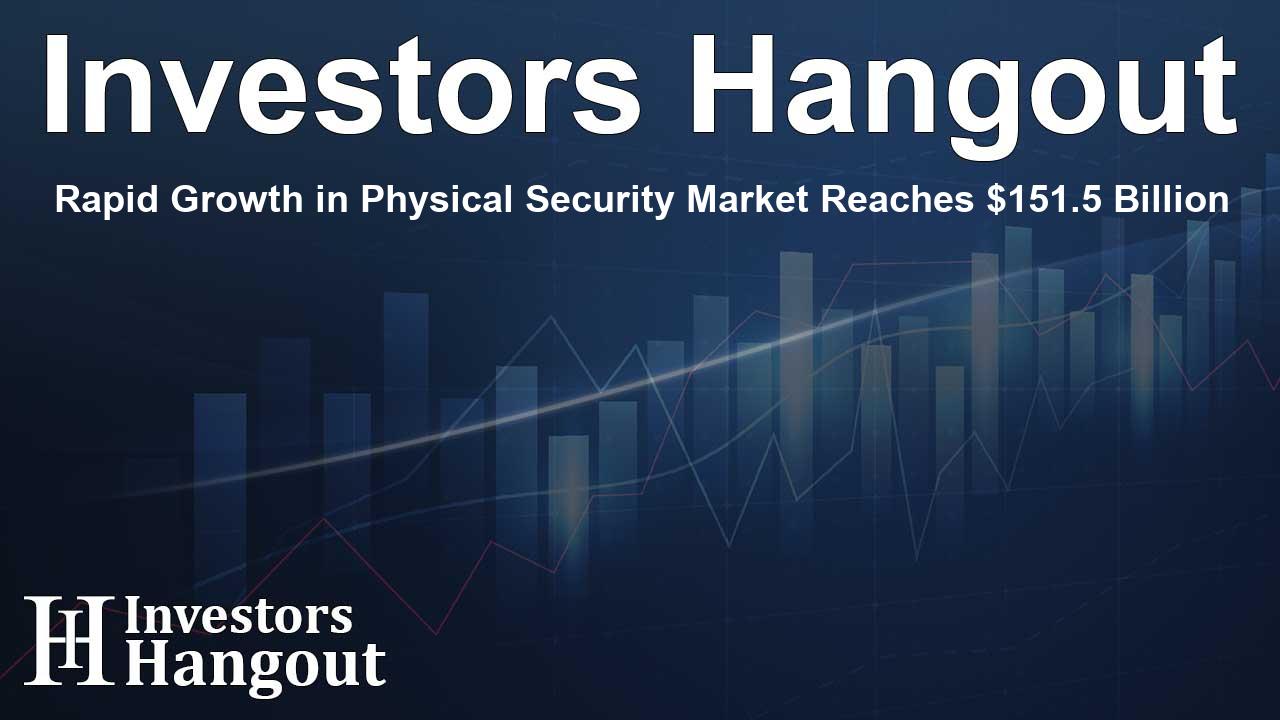Rapid Growth in Physical Security Market Reaches $151.5 Billion

The Expanding Physical Security Market
The global physical security market is on a trajectory toward remarkable growth, forecasted to rise from USD 120.79 billion to USD 151.50 billion by 2030. This expansion represents a robust Compound Annual Growth Rate (CAGR) of 4.6% over the coming years. Key players in this space, including renowned companies such as Johnson Controls (Ireland), Bosch Building Technologies (Germany), and Honeywell (US), are at the forefront of this evolution.
Drivers of Market Growth
Several factors are fueling this surge in the physical security sector. Firstly, there’s an increasingly urgent demand for public safety and asset protection across various sectors. As urbanization accelerates, the expansion of smart cities is critical, prompting governments and enterprises to prioritize security and surveillance systems to safeguard citizens and infrastructure. These investments are necessary to confront urban threats effectively.
Government Initiatives and Private Sector Involvement
Both government agencies and private organizations are heavily investing in advanced security measures. This collaborative approach is vital in constructing essential infrastructures to support smart city projects, which require integrated security solutions to ensure efficient operations and minimize risks effectively.
Market Challenges and Restraints
While prospects for the physical security market appear bright, challenges also exist. Privacy concerns related to surveillance technologies—especially regarding biometric data—are significant restraints. Additionally, budget limitations in the public sector and among small and medium enterprises (SMEs) can hinder the expansion of cutting-edge security systems.
Innovative Solutions in Development
Despite the challenges, the market remains ripe with opportunities. There is a notable increase in deploying artificial intelligence (AI) and machine learning in security systems. These technologies enhance surveillance and threat detection, offering organizations improved efficiency and responsiveness to security issues.
Key Market Players
The landscape of the physical security market features several leading companies that drive innovation and adoption. These include:
- Johnson Controls (Ireland)
- Bosch Building Technologies (Germany)
- Honeywell (US)
- Apollo Asset Management (US)
- Cisco (US)
- Telus (Canada)
- Wesco (US)
- Genetec (Canada)
- HID Global (US)
- Pelco (US)
Emerging Trends in Security
A growing trend within the physical security market is the integration of cybersecurity with physical security measures. With the rising interconnectivity of security systems like IP cameras and automated access controls, organizations recognize that physical threats are equally as dangerous as cyber threats. Moreover, there’s a shift toward creating unified security practices, bringing together teams from physical security and IT to enhance overall protection.
The Role of AI and Machine Learning
The surge in AI and machine learning applications significantly impacts how security solutions are developed and implemented. Enhanced capabilities such as predictive threat analysis and intelligent video monitoring provide organizations with tools to maintain situational awareness and swiftly respond to potential risks. These advancements are not only beneficial but also necessary in today’s security climate.
Regional Insights
North America, especially the United States, is predicted to lead the physical security market in the coming years. Stringent regulations on public safety and the rapid expansion of smart building technologies contribute to this trend. Firms like Johnson Controls and Honeywell are pivotal in solidifying the U.S.'s position as a frontrunner in physical security innovations.
Investment and Innovation
The increasing frequency of security threats and incidents further necessitates substantial investments in innovative security infrastructures. The fusion of artificial intelligence and Internet of Things (IoT) technologies is becoming prevalent, fostering rapid advancements in the sector. Companies are increasingly focusing on developing integrated systems that offer real-time monitoring and threat detection, essential for maintaining security standards.
FAQs
What is the projected growth of the physical security market?
The physical security market is projected to grow from USD 120.79 billion in 2025 to USD 151.50 billion by 2030.
What are the main drivers of growth in this market?
Key drivers include rising demand for public safety, smart city development, and advancements in security technologies.
Which companies are leading in the physical security market?
Prominent companies include Johnson Controls, Bosch Building Technologies, and Honeywell.
What challenges does the physical security market face?
Challenges include privacy concerns, budget constraints, and limitations in public sector funding.
How does AI contribute to physical security?
AI enhances security systems with predictive analytics, real-time monitoring, and intelligent incident response capabilities.
About The Author
Contact Caleb Price privately here. Or send an email with ATTN: Caleb Price as the subject to contact@investorshangout.com.
About Investors Hangout
Investors Hangout is a leading online stock forum for financial discussion and learning, offering a wide range of free tools and resources. It draws in traders of all levels, who exchange market knowledge, investigate trading tactics, and keep an eye on industry developments in real time. Featuring financial articles, stock message boards, quotes, charts, company profiles, and live news updates. Through cooperative learning and a wealth of informational resources, it helps users from novices creating their first portfolios to experts honing their techniques. Join Investors Hangout today: https://investorshangout.com/
The content of this article is based on factual, publicly available information and does not represent legal, financial, or investment advice. Investors Hangout does not offer financial advice, and the author is not a licensed financial advisor. Consult a qualified advisor before making any financial or investment decisions based on this article. This article should not be considered advice to purchase, sell, or hold any securities or other investments. If any of the material provided here is inaccurate, please contact us for corrections.
